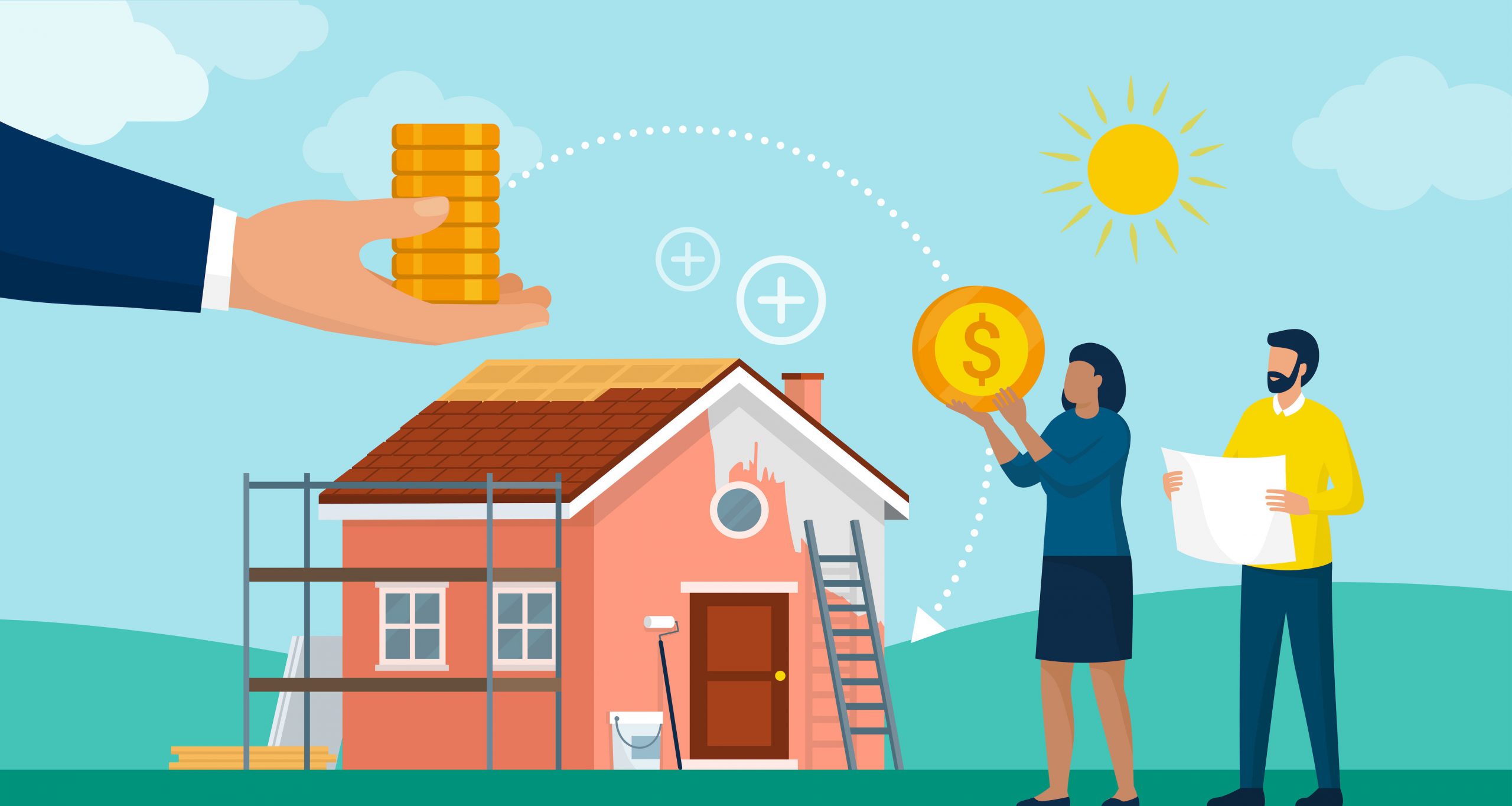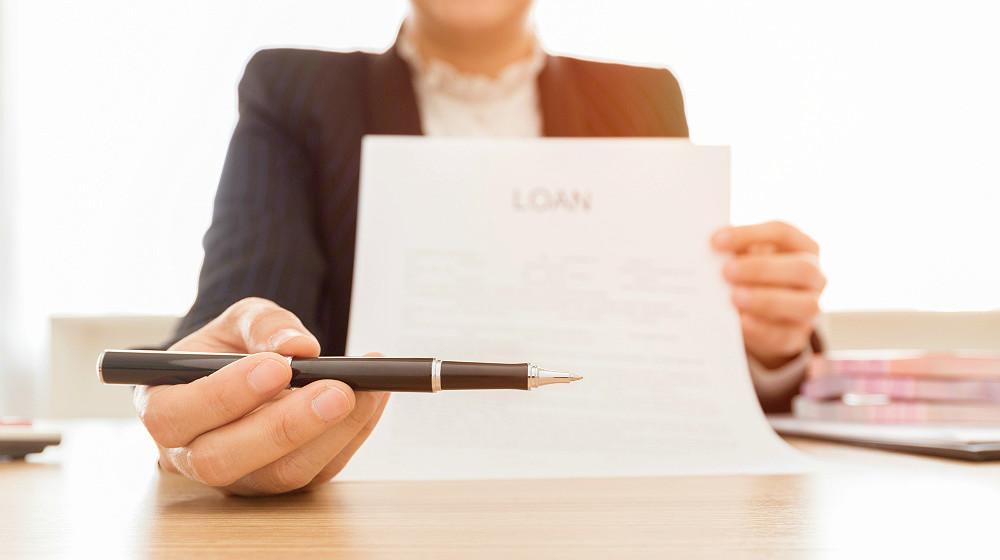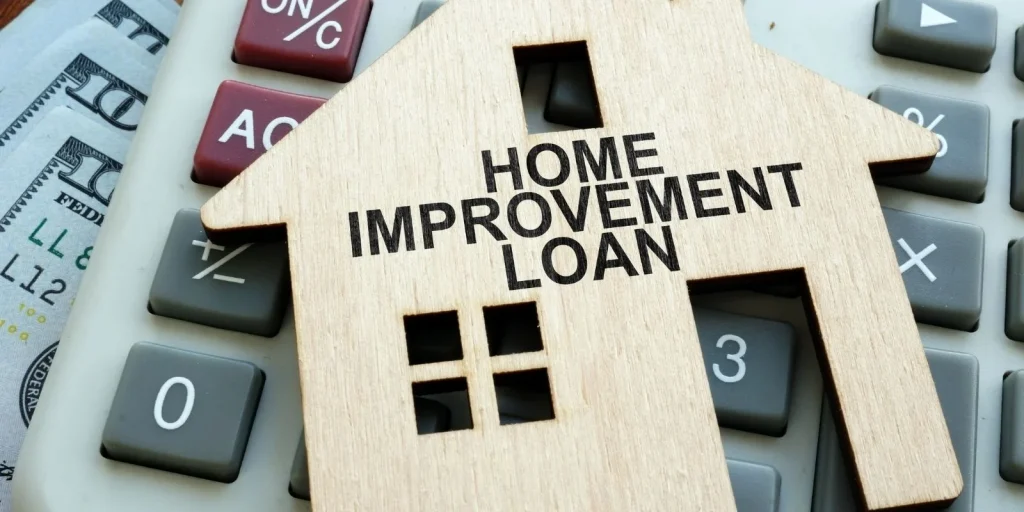
When you want to finance a kitchen remodel, you have a variety of alternatives to pick from, with each option changing depending on the amount of equity you have in your house, whether the credit is secured or unsecured, and the amount of borrowing power it provides.
A kitchen redesign is undoubtedly the most popular remodeling project among homeowners, and it can be costly. However, by choosing the appropriate financing option, you can borrow the money to accomplish it exactly the way you want it, without compromising the standards.
The fact is that you have a variety of options for financing your new kitchen, and it’s not always easy to choose the best one. Perhaps you’ve begun looking for ‘Finance a kitchen remodel’ on Google and are now perplexed by the various possibilities accessible to you. However, we want to assist you in determining the best way to finance a kitchen remodel.
Contents
Finance a Kitchen Remodel: Benefits of a Home Improvement Loan
On the surface, the advantages are clear. However, if you explore a bit further, you’ll find a few unique bonuses.
Securing and strategically investing in your house will increase the value of your property in the long run. If this were not the case, it is unlikely that homeowners would gut their old kitchen before placing their house on the market. It’s too bad they didn’t get started on this project sooner, which brings us to our second argument.
Getting a loan to renovate your kitchen will genuinely make you pleased, and you’ll feel it every time you step into the room for years. Why wait until you’re ready to sell to purchase that new kitchen and never use it?
Finance a Kitchen Remodel: How to Budget

The easiest method to budget for a kitchen makeover is to figure out how much you can comfortably repay and design your remodel around that figure.
Before applying for kitchen renovation finance, consider the following questions:
- How much cash from savings can I afford to spend?
- How much money can I borrow? What kind of monthly loan payment am I able to make?
- How much time do I want to put into paying off my kitchen renovation? (Do I want a lengthy or short payback period?)
- Will these upgrades boost the value of my house?
- Will these improvements increase the value of my home?
Also, include a 20 percent buffer in your budget for unexpected expenses. This means that if you intend to spend $1,000, you should budget for $1,200. Things are sure to go wrong in any renovation job. You won’t have to crawl into your pocket to locate additional money if your budget for those situations ahead of time.
If you’ve decided to get one, two basic ways to finance a kitchen remodel are unsecured and secured.
Finance a Kitchen Remodel: Unsecured Home Improvement Loans

Because this form of loan doesn’t utilize your property as security, putting the lender at a higher risk. As a result, loans under this category are often smaller, have higher interest rates, and must be returned within a 10-year time frame or fewer.
Low To No Interest Credit Cards
If you have decent credit, you are undoubtedly inundated with low-interest credit card offers. They might be in the figure of a new card or checks written against existing cards. It’s relatively unusual to get approved for $10,000 in unsecured credit with a 3.99 percent interest rate for 18 months. That’s an excellent budget for a minor kitchen makeover, such as new worktops, flooring, and lighting. (read this blog for more tips if you are planning to finance a kitchen a remodel)
You can’t go wrong with it, as long as you pay it back on time. Just be aware that if you go beyond the agreed-upon repayment time, you may wind up paying a significant amount of interest, rendering this choice financially unreasonable.
Pros – This loan is simple to obtain and has a low-interest rate.
Cons – You won’t have a lot of time to pay it back, and if you wait too long after the deal expires, you might end up owing a lot of money. Furthermore, interest is not deductible.
Personal Loans
Consider acquiring an unsecured personal loan if you want to remodel for more than $10,000 and up to $30,000. In most cases, you’ll be able to borrow more money than you could with a credit card, and they’re relatively straightforward to obtain.
Because they’re unsecured, the annual percentage rate (APR) will almost certainly be higher than a credit card. Still, the payback period will be considerably longer, making monthly payments much simpler to manage.
Check out a couple of different banks, including your credit union and the more prominent online banks. Personal loan interest rates and conditions vary significantly amongst institutions, so don’t be afraid to submit a half-dozen or more applications in a single day.
Pros: The application procedure is straightforward. You can borrow enough money to pay for a significant kitchen makeover without needing to put money aside for processing fees or closing charges.
Cons: no tax advantages and Higher interest rates.
Finance a Kitchen Remodel: Secured Home Improvement Loans

Do you have any equity in your home and intend to spend more than $30,000? This might be your best option. If they ask what you plan to do with the money throughout the application process, don’t be afraid to say you’re remodeling your kitchen. The fact that you’re upgrading the property you’re using as collateral affects whether you’ll qualify and, if so, what your interest rate and conditions will be.
However, there are a few catches with these. During the application procedure, you’ll have to jump through some more hoops. Before you obtain the money, you’ll probably have to pay some closing fees, and you’ll need enough equity in your property to qualify.
If your property is worth $100,000 and you owe the bank $50,000 in mortgage payments, you’ll be able to borrow roughly $35,000. Generally, banks will not allow you to exceed your loan-to-equity ratio.
Remember that if you take out a secured loan to renovate your kitchen, you’re putting your house in danger. If you fail to pay, the bank has the power to foreclose on your property to recover its funds.
Cash-Out Refinance
In the above scenario, a cash-out refinancing would include:
- Taking out an $85,000 loan.
- Paying down the $50,000 old mortgage.
- Pocketing the remaining $35,000 to put into your kitchen.
The benefit of this financing option is that you may pay it off over 30 years or more. Mortgage payments are inexpensive in comparison to other choices. Still, you’ll be making them for a considerably more extended period. This is a significant consideration if you can acquire a significantly cheaper interest rate than you’re now paying. If you qualify for a more moderate pace than the one on your existing mortgage, your payment may not vary as much as you expect.
Home Equity Loans
A second mortgage is another term for it. They are often medium to long-term loans with a set interest rate and a monthly repayment schedule with an amortization timeline.
If your property is worth $100,000 and you have $50,000 in equity, you’ll get a lump amount of around $35,000 for your renovation. Your original mortgage will remain in place, and you will now make two monthly payments: one for the original mortgage and the other for the home equity loan used to renovate the kitchen.
Home Equity Line Of Credit Heloc
Opening a credit line is a convenient method to get the funds you need to renovate your kitchen. However, you must pay for it with an adjustable interest rate, which may be greater than a fixed home equity loan. It’s a riskier alternative since interest rates might climb, but there are no closing charges with a HELOC.
Different banks provide different options, but you’ll generally be able to borrow money from them for 5 to 10 years. You pay interest on the money you borrowed during this ‘draw’ period. After the draw time is over, you have a certain number of years to repay the loan. Typically, this is between 10 and 15 years, depending on the terms of the initial deal.
Federal programs
Government loans are the last option for funding home upgrades. The US Department of Housing and Urban Development offers the Section 203(k) program (HUD). It allows you to take up a new mortgage or refinance an existing one and include the cost of home improvements in the loan. There are certain restrictions on what the money may be used for. Still, they usually go toward bathroom and kitchen upgrades.
Knowing how to fund a kitchen makeover will assist you in creating the kitchen of your dreams. Prepare a budget, establish how much you can afford, and go into your kitchen renovation project with a clear financial strategy before you begin.
Finance a Kitchen Remodel: Terms to Know
APR Lending Lingo Percentage rate calculated annually. The total cost of a mortgage, including all upfront costs as well as the introductory interest rate.
ARM Mortgage with an adjustable-rate
Closing expenses Origination fee, discount points, title insurance, appraisal, and credit report fees are all paid with the down payment.
Points for saving A portion of the interest is paid upfront. Points reimburse a lender for taking on a higher-risk loan by raising the interest paid upfront without increasing the interest rate. One point is 1% of the loan amount.
Equity To determine a homeowner’s share in a property, the loan amount is removed from the assessment.
Estimate with good faith Before a loan is closed, a mortgage lender must disclose all estimated charges.
A credit line Instead of starting with a fixed sum, the borrower can draw more or less money (up to a specific limit) on loan.
The loan-to-value (LTV) ratio measures how much money The percentage of a home’s appraisal that lenders use to determine the amount of a loan.
The origination fee for a loan A one-time fee of 1 to 2 percent of the loan amount is charged by a lender when they make a mortgage loan.
Mortgage A loan starts at one sum and is progressively paid off over a certain period with fixed monthly installments.
Broker in mortgages A lending source that does not represent a single lender but originates loans from a variety of them.
The primary monthly expenditures of owning a property with a mortgage are PITI (principal, interest, taxes, and insurance).
A private company provides PMI Mortgage insurance. In the event of a loan default, this insurance protects the lender. On loans with a loan-to-value ratio of more than 80%, PMI is frequently necessary.
Finance a Kitchen Remodel: SO, WHICH ONE IS BEST?
Obtaining a secured loan to fund your project may appear to be a slam-dunk, given the benefits of set interest rates and the opportunity to be a tax write-off. Assuming you have good credit, figuring out what works best for you isn’t as straightforward as you may believe.
For example, if you’re planning a small-scale, low-cost project, you could decide that going unsecured is the way to go. The reason for this is that the process is quite similar to applying for a credit card. Lenders who make these loans often employ the same screening procedures as those who apply for a credit card.
Furthermore, the word “second mortgage” is frightening – or at the very least threatening – phrase. If the scope of your kitchen remodels is small enough to pay back in a couple of years, an unsecured loan won’t put your property at risk of foreclosure, something you may not want to deal with.
If your kitchen is in dire need of repair, a secured loan could be the way to go. Reduced monthly payments and a more lenient repayment plan will come from their lower interest rates.
Contact Devina home, and discuss how to finance a kitchen remodel in detail
Resource:
Davis S Here’s How to Finance Your Remodel Retrieved 24 October 2021 thisoldhouse
https://www.thisoldhouse.com/home-finances/21015048/here-s-how-to-finance-your-remodel
Jenkins S (2018 Aug 21) HOW TO RAKE IN THE MONEY TO JUMPSTART YOUR KITCHEN REMODEL archetypes
https://architypes.net/kitchen/remodeling-loans/
Goldman J (2021 Oct 14) How to Finance a Kitchen Remodel renofi



0 comments